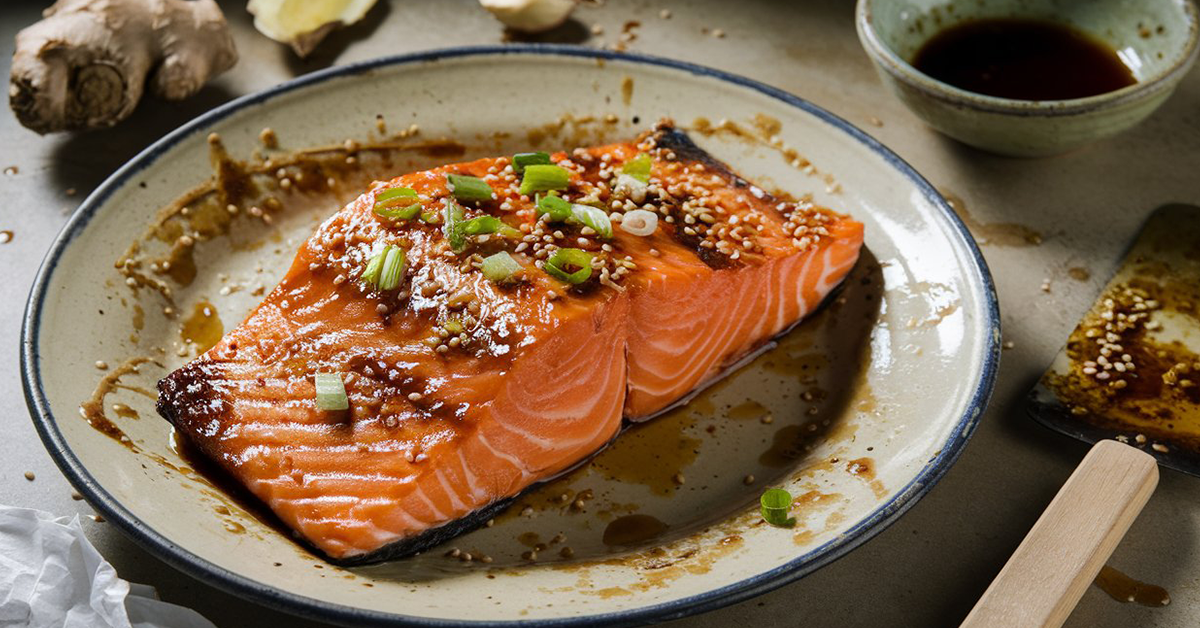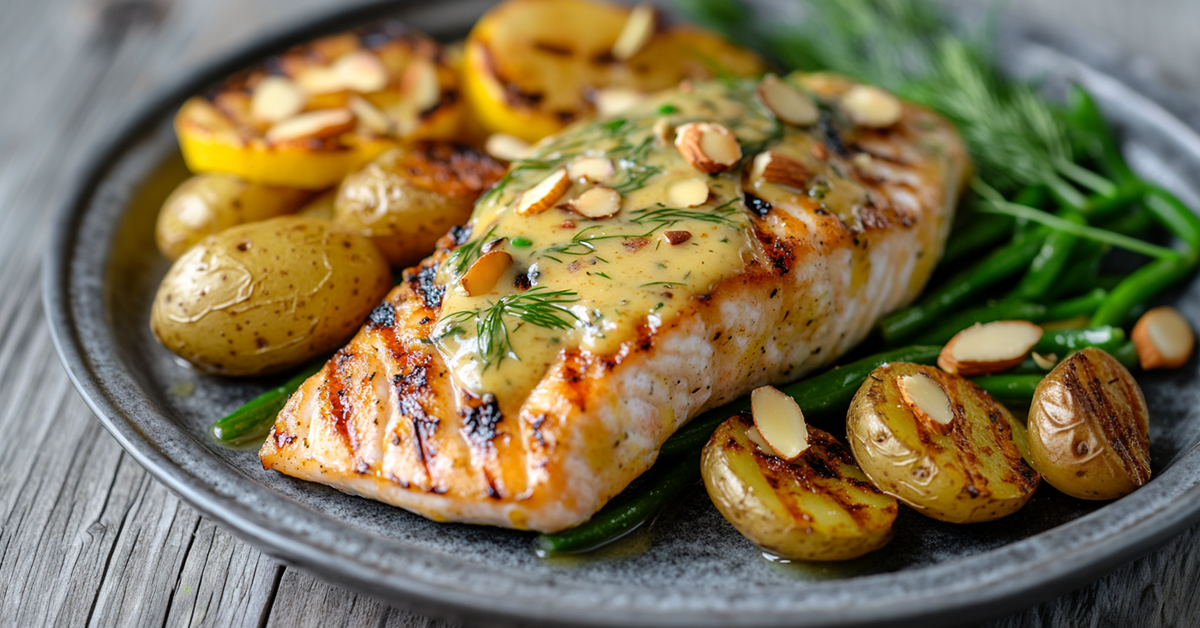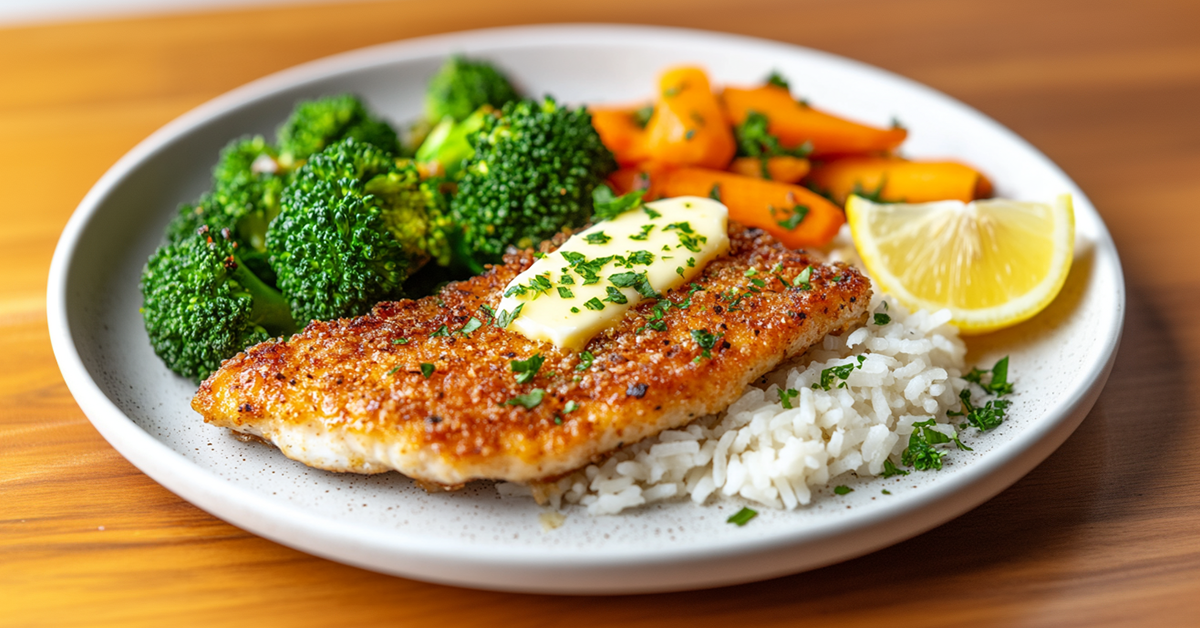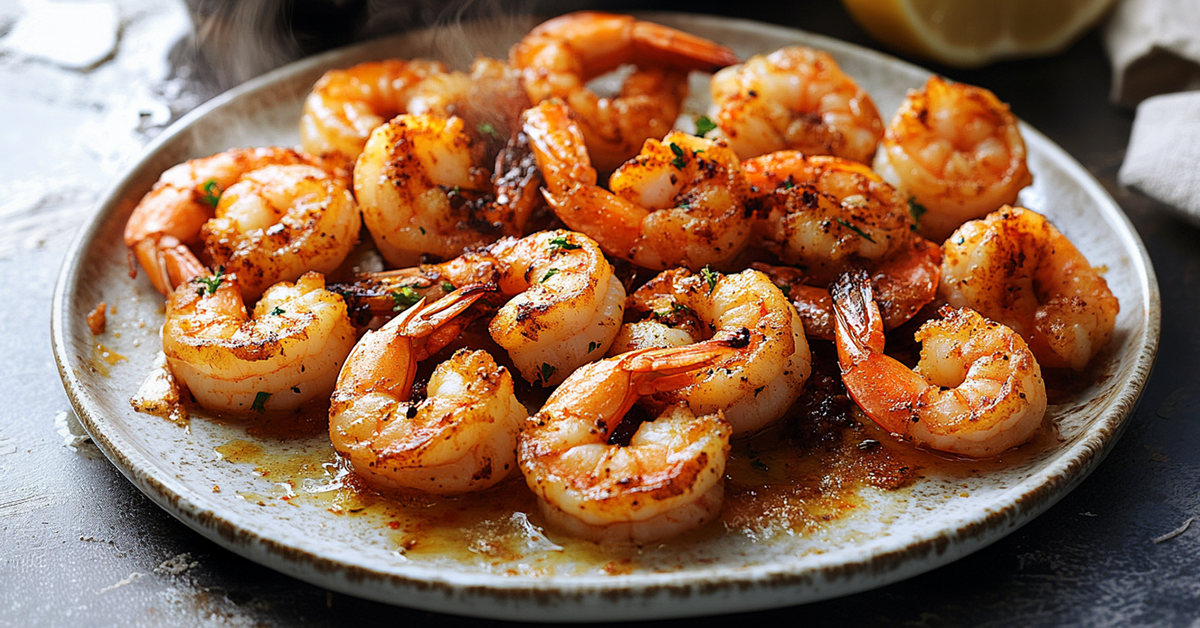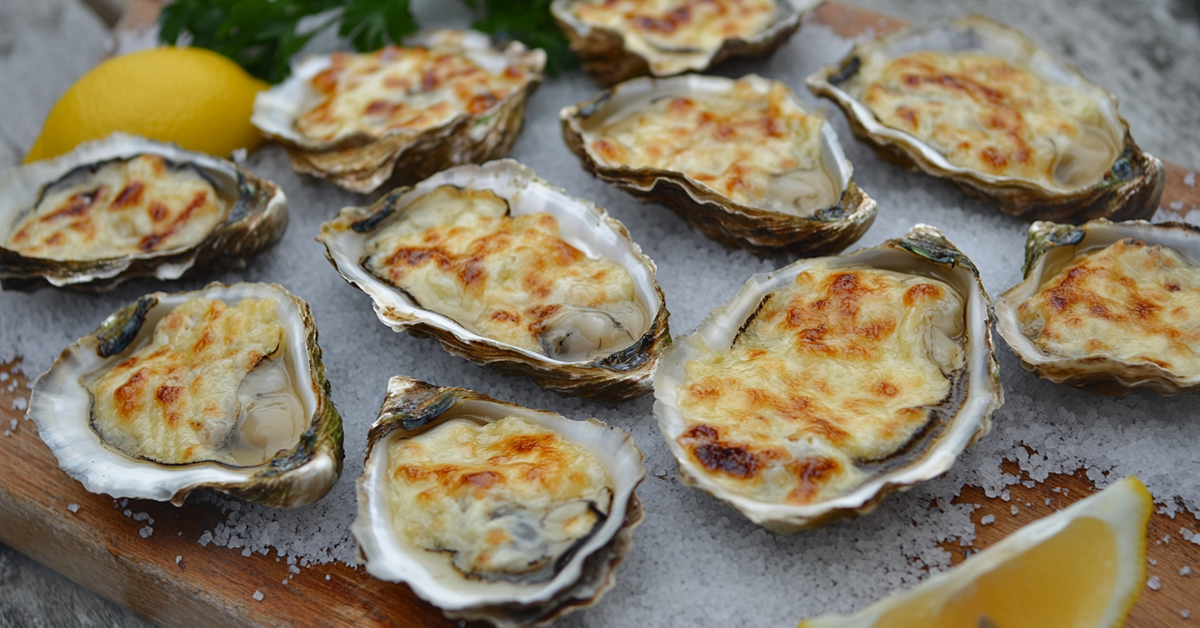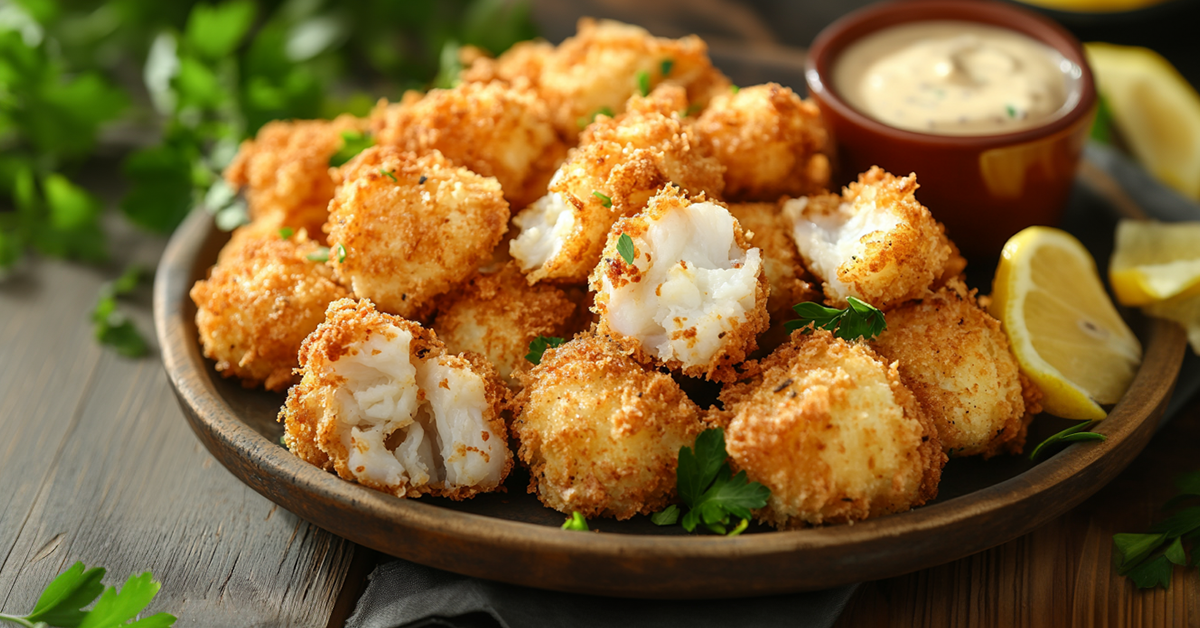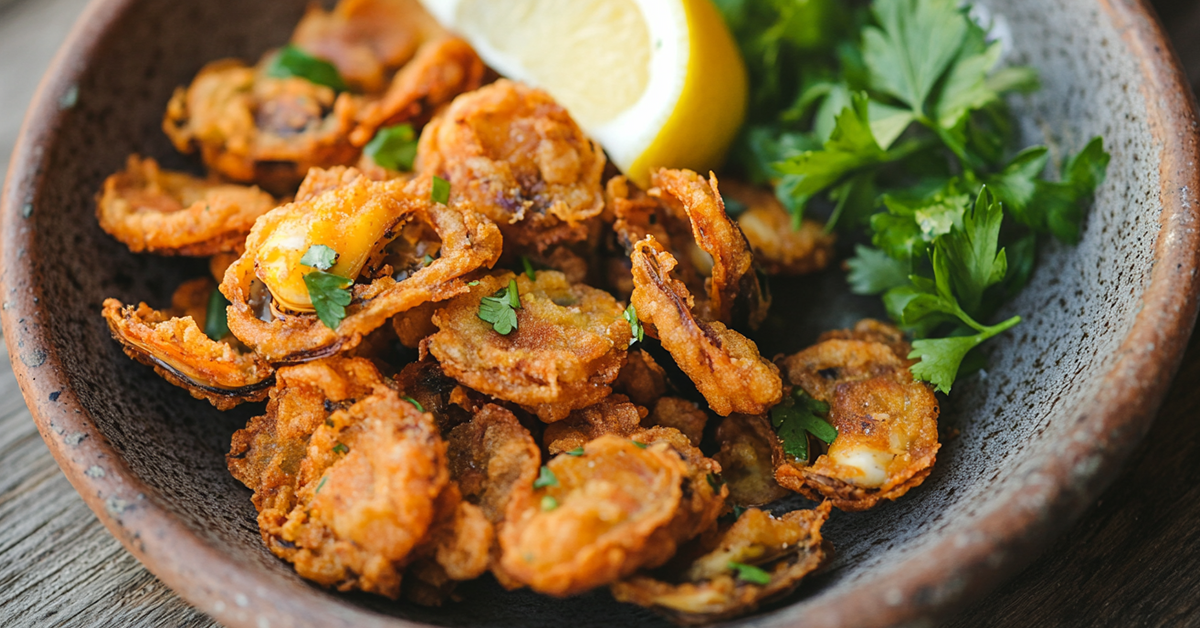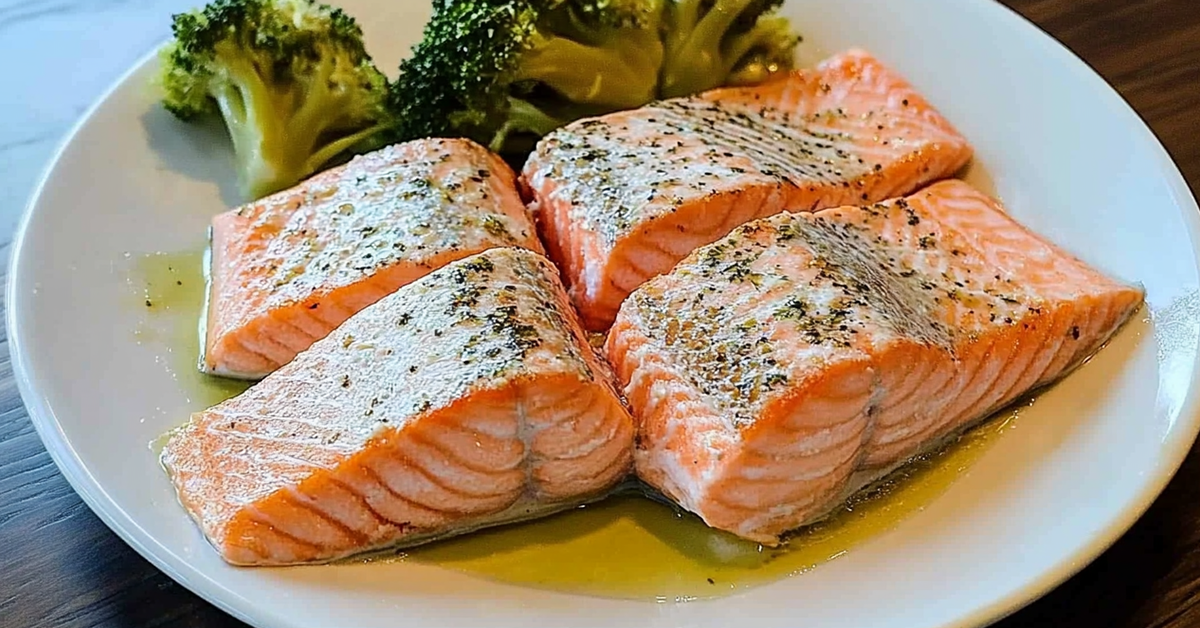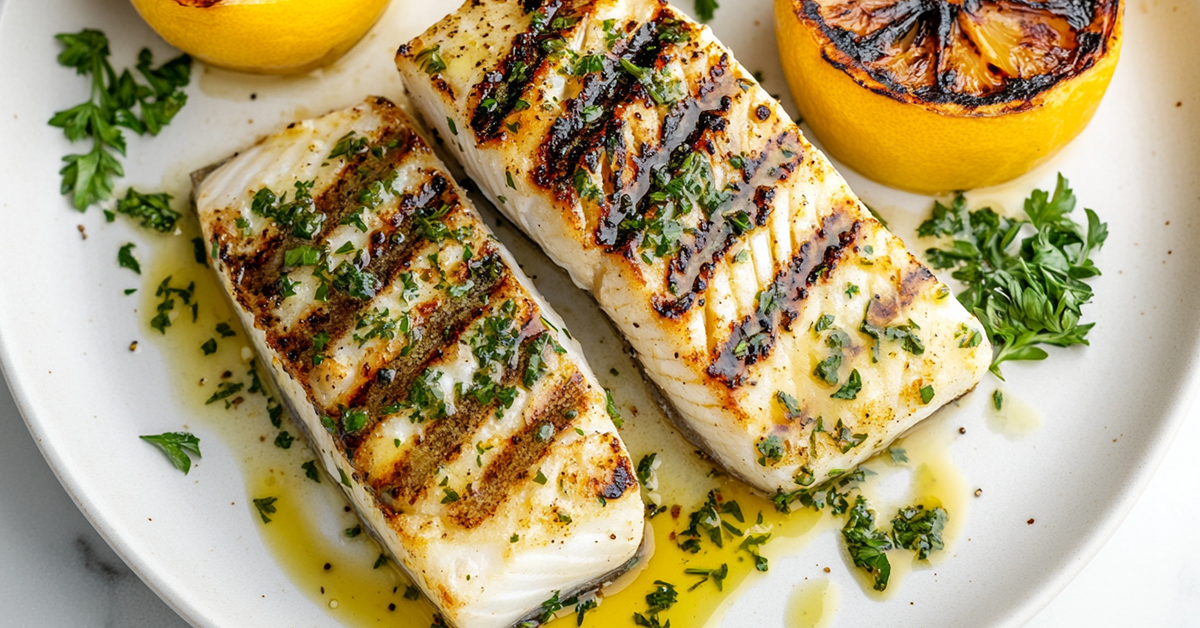Japanese restaurants have mastered a perfectly glazed, umami-rich salmon that makes customers return repeatedly. A simple yet powerful ingredient called miso creates this magic. Your kitchen can produce restaurant-quality dishes with this miso salmon recipe.
Tender salmon paired with sweet and savory miso glaze creates an irresistible flavor combination. This piece will guide you through everything – from ingredient selection to the perfect glaze consistency. Home cooks and professional chefs love this baked miso salmon recipe that has become a culinary favorite.
The recipe’s steps are easy to follow, and our expert tips will help create the perfect miso salmon glaze. We’ll also point out common mistakes to avoid, ensuring your dish turns out perfectly. This Japanese-inspired dish brings restaurant quality right to your dining table.
Table of Contents
What Makes Miso Glazed Salmon Special
Miso glazed salmon stands out as a brilliant fusion of culinary traditions that emerged in the late 20th century. This dish’s special quality comes from its perfect balance of flavors that excite your taste buds:
- Sweet notes from the caramelized surface
- Savory depth from the miso paste
- Rich umami undertones
- Subtle tang from complementary ingredients
Miso’s magic works wonders with salmon. The thick paste acts as a natural insulator that helps your fish cook gently and evenly. The miso-soy combination creates a natural brining effect and keeps your salmon’s moisture locked in while cooking. Each bite stays succulent.
This dish turns a simple piece of salmon into something extraordinary without complex techniques. Miso salmon’s beauty shines through its simplicity – just five minutes under the broiler after marination. The end result gives you a perfectly charred exterior with a tender, moist interior that melts in your mouth.
Miso glazed salmon becomes even more exciting especially when you have different miso varieties. The white miso offers mild sweetness while red miso delivers a more robust flavor. Each type brings its unique character to the dish. Darker varieties create richer colors and deeper flavor profiles that let you customize based on your priorities.
This dish combines convenience with sophistication brilliantly. Traditional Japanese miso-glazed fish recipes might need three days of marinating. Your miso salmon takes less than 20 minutes to prepare. This makes it perfect for special occasions and weeknight dinners alike.
Understanding Miso for Perfect Miso Salmon
Let’s explore the fascinating world of miso, the star ingredient that makes your salmon truly exceptional. This traditional Japanese fermented paste dates back to the 900s. Different types have evolved through the ages, each bringing its own character to your dishes.
You’ll encounter three main varieties of miso for your salmon:
- White Miso (Shiro): Mild and sweet, perfect for those new to miso cooking
- Yellow Miso (Awase): A balanced middle-ground option
- Red Miso (Aka): More intense and saltier, ideal for bold flavors
Miso’s magic comes from its fermentation process. Craftsmen combine cooked soybeans with salt, koji (a fermentation starter), and sometimes rice or barley. This process can take anywhere from three months to three years and develops complex layers of umami and sweetness.
White miso stands out as the preferred choice for your miso salmon recipe. It’s accessible to more people in grocery stores and Asian markets, offering a perfect balance of flavors that complement your fish beautifully. You can experiment with different varieties if you’re feeling adventurous, but keep in mind that each type brings its own level of saltiness.
Quality indicators matter while choosing miso. The finest varieties contain only four simple ingredients: water, soybeans, koji grain, and salt. Here’s a useful tip – if you can eat it plain or as a dip with vegetable sticks, you’ve found a quality product.
Miso is a living food that expresses terroir – a unique flavor profile influenced by ingredients, climate, and time. It has a long shelf life in your fridge, but its flavor will begin to change after several months. Use it regularly to enjoy its best qualities.
Read also: Chinese Fish Soup Recipe
Selecting the Best Salmon for Miso Glaze
Selecting the right salmon plays a significant role in creating that perfect miso-glazed masterpiece. Center-cut salmon filets cook evenly and deliver consistent results.
Your salmon selection should focus on these important factors:
- Wild vs. Farmed: Wild-caught salmon typically has lower contaminant levels and offers superior flavor
- Thickness: Choose filets less than 1 inch thick for optimal cooking
- Temperature: Bring to room temperature before cooking for even results
- Skin Preference: Skinless filets work best for miso glazing
Fresh salmon might seem like the better choice, but here’s a surprising fact: frozen salmon can be just as good as fresh. Most “fresh” salmon has actually been previously frozen according to FDA regulations. You should completely thaw frozen salmon before marinating.
Several salmon species work great for this miso recipe. King salmon (also known as Chinook) is ideal for baking due to its high-fat content and thick flesh. Farmed Atlantic salmon makes an excellent budget-friendly option and is accessible to more people.
You want filets weighing about 6 ounces (170g) each. Note that consistency in thickness will give a perfect glaze and ensures all pieces cook at the same rate.
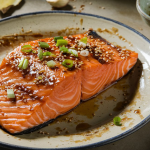
Miso Salmon Recipe
- Total Time: 30 minutes
Description
Want to make restaurant-quality miso salmon in your kitchen? This recipe combines sweet and savory flavors that create a perfectly glazed fish. Your guests will love this sophisticated yet simple dish.
The miso glazed salmon takes just 30 minutes from start to finish. A flavorful miso mixture marinates the salmon filets. The broiling process creates a caramelized exterior while the fish stays moist and tender inside.
Ingredients
To make the Salmon and Garnish:
- 2 skinless salmon filets (about 8 ounces each).
- Sesame seeds for garnish.
- Sliced scallions for garnish.
To make the Miso Marinade:
- 2 tablespoons white miso paste.
- 1 tablespoon sake.
- 1 tablespoon mirin.
- 1 tablespoon light soy sauce.
- ¼ teaspoon sesame oil.
- 1 clove garlic, grated.
- ½ teaspoon grated ginger.
Instructions
- Prepare the Marinade: Whisk all marinade ingredients in a resealable bag until they blend well.
- Marinate: Place salmon in the marinade and coat all sides. Let it sit for 30 minutes at room temperature (if not too hot) or in the fridge.
- Preheat: Heat your oven to 400 degrees F and line a sheet pan with aluminum foil.
- Cook: Place the marinated salmon on the prepared pan after shaking off extra marinade. Bake for 13-14 minutes, then broil for 1-2 minutes until you see slight caramelization.
Notes
Special Equipment: A sheet pan, aluminum foil, and a large resealable bag will get the job done.
Marinating Time: The fish can become mushy after 45 minutes of marinating.
Miso Selection: White miso paste works best for this recipe.
Watch the salmon during broiling because miso burns quickly.
- Prep Time: 20 minutes
- Cook Time: 10 minutes
- Category: Seafood
- Method: Baking
- Cuisine: Asian
The Science Behind the Perfect Miso Glaze Recipe
The science behind your perfect miso glaze is the sort of thing i love! You can create that restaurant-quality finish every time by understanding how each component works together.
Your glaze becomes magical because of miso paste’s unique properties. It creates a powerful flavor-boosting mixture when mixed with other ingredients. The glaze works because of three main components:
- Miso and soy sauce provide glutamates for umami depth
- Sugar helps create caramelization and browning
- Oil will give an even heat transfer to char perfectly
Something amazing happens when you broil the glaze. The high heat quickly caramelizes the brown sugar and creates that delicious crust while keeping the inside moist. Miso paste acts as a natural insulator that lets your salmon cook gently and evenly.
The moisture retention process is quite clever. Both miso and soy sauce contain salt that creates a natural brining effect. This weakens proteins in the salmon flesh. Your fish stays juicier during cooking because of these molecular changes.
The Glazing Process Timing plays a substantial role here. You build up a thick, concentrated surface layer by coating the glaze at 5 and 8-minute intervals. This layering method intensifies flavors gradually and creates that sticky, irresistible coating on your miso salmon.
Note that your choice of miso affects the final result. White miso brings a milder sweetness because it ferments for less than a year. Red miso delivers a more intense, saltier profile since it’s fermented for 1-5 years. The fermentation duration affects both flavor and how your glaze caramelizes under heat.
Health Benefits of Miso Salmon
This miso glazed salmon not only tastes amazing but also offers remarkable health benefits that make it perfect for your wellness goals.
A plate of miso salmon gives you protein-packed nutrition, with 63% of total calories coming from protein. The best part? You get complete protein with all amino acids your body needs.
Miso’s fermentation adds extra goodness to your meal. This dish helps improve your:
- Digestive Health: Fermentation boosts nutrient absorption and helps good gut bacteria thrive
- Immune System: Eating fermented foods like miso can reduce antibiotic needs by up to 33%
- Antioxidant Intake: Miso’s isoflavones help curb oxidative stress
- Vitamin Levels: Fermentation helps your body absorb vitamins K and B12 better
The numbers speak for themselves. One serving delivers 149% of your daily protein needs. You’ll also get 38% of your daily potassium and 25% of your magnesium requirements.
Salmon’s omega-3 fatty acids work perfectly with miso’s benefits. Each serving packs 3g of total omega-3 fatty acids that support your heart and brain health. The fermentation process makes these nutrients easier for your body to absorb.
Health-conscious eaters will appreciate the balanced macronutrients with 29% fat and 8% carbs. These numbers make it a great fit for many dietary priorities.
References:
– EatThisMuch
Nutritional Information
Let me show you exactly what’s in each serving of miso glazed salmon. These numbers will help you plan your meals better.
Each serving of miso salmon packs 558 calories which makes it a filling main course. Here’s what you get in terms of macronutrients:
| Nutrient | Amount | Daily Value |
|---|---|---|
| Protein | 83g | 61% |
| Total Fat | 17g | 22% |
| Carbohydrates | 11g | 4% |
Your plate comes loaded with everything your body needs:
- Omega-3 fatty acids: 3g total, including 2g DHA and 1g EPA
- Vitamin B12: 498% of your daily needs
- Selenium: 267% of daily value
- Phosphorus: 168% of daily value
The dish contains 1,288mg of sodium, about 56% of your daily recommended intake. You’ll be happy to know it has just 6g of sugar, making it a great low-sugar protein choice.
This nutritious meal delivers much niacin (177% DV), vitamin B6 (128% DV), and magnesium (25% DV). The protein content stands out at 83g per serving which helps maintain and build muscle mass.
References:
– EatThisMuch
Expert Tips for Baked Miso Salmon
These game-changing tips will help you turn your kitchen into a professional cooking space to make perfect miso salmon. The first step is selecting high-quality, fresh ingredients that make a world of difference in your final dish.
Your keys to success are timing and temperature. The perfect marinade infusion needs 20-30 minutes for the salmon to soak up those flavors. You can safely marinate it up to 24 hours in the refrigerator to intensify the taste.
Preheat your oven to 400°F (204°C) before you start cooking. A pro tip is to line your baking sheet with parchment paper or aluminum foil for easy cleanup. Gently scrape off excess marinade before placing your salmon in the oven to prevent burning that can affect your glaze’s perfection.
Temperature control leads to that restaurant-quality finish. Your target internal temperature should be 145°F (63°C) at the thickest part. Here’s what you should know about timing:
- 5 minutes per ½-inch thickness of salmon
- Pull from heat at 140°F for carryover cooking
- Rest for 5 minutes after cooking
Using enough fat while cooking prevents sticking and adds incredible flavor. Your fish will take just what it needs while keeping that perfect texture.
The right distance from the broiler element creates that coveted caramelized finish. Position your rack 4-10cm from the heat source if you’re not getting enough browning. This small adjustment can create that beautiful glazed finish you’re looking for.
Serving Suggestions for Miso Salmon
Want to lift your miso salmon dining experience? Let’s discover perfect pairings that will make this meal unforgettable.
Wine lovers can choose from several excellent options with miso salmon. A Willamette Valley Pinot Noir brings warm, ripe fruit flavors and subtle truffle notes that match the savory-sweet glaze. White wine enthusiasts might prefer an Alsace Pinot Gris with its honeyed notes that echo the glaze’s sweetness and balance the salmon’s richness.
Your perfect plate needs a solid foundation of grains. These accompaniments work every time:
- Rice Variations: Coconut rice, ginger rice, or classic steamed rice
- Fresh Vegetables: Steamed bok choy, asparagus, or sautéed mushrooms
- Crisp Salads: Cucumber salad with rice vinegar dressing or warm mushroom salad
- Asian-Inspired Sides: Blistered shishito peppers or okra with ginger soy sauce
A balanced plate combines different textures and temperatures. The warm, buttery salmon tastes amazing with a cool, crisp cucumber salad in sweet-tangy vinaigrette. This refreshing crunch creates a perfect contrast to the rich miso-glazed fish.
A warming bowl of homemade miso soup completes your Japanese-inspired experience. This combination creates a meal that keeps people fed while staying authentic. The best side dishes should be easy to prepare yet complement your main dish’s complex flavors.
Storage and Meal Prep Guide
Your delicious miso salmon dinner left you with extras? The perfect glazed finish and tender texture should stay just as tasty for your next meal. The right storage plays a vital part in preserving the quality you worked hard to achieve.
The best way to keep your leftover miso glazed salmon fresh is storing it in an airtight container in the refrigerator for up to 3 days. Your cooked salmon can last up to 3 months in the freezer if you plan to meal prep for later. Here’s what you need to do with your leftovers:
- Refrigerator Storage: Cool to room temperature, then store in an airtight container
- Freezer Method: Freeze on a sheet pan until solid (2-3 hours), then transfer to a freezer-safe container
- Thawing Process: Move from freezer to fridge overnight for best results
Your leftover miso salmon offers several reheating options. Take the salmon out of the fridge about 30 minutes before reheating to get the best results. Pick the method that works best for you:
- Stovetop Method: Heat a skillet over medium-low with a splash of water, cover and warm for 2-3 minutes
- Oven Technique: Warm at 275°F for about 15 minutes, aiming for an internal temperature of 125°F to 130°F
- Microwave Option: Cover with a paper towel and heat in 30-second intervals until warmed through
Gentle reheating is significant to keep your salmon from drying out. These methods will help maintain that restaurant-quality taste you love, whether you’re planning tomorrow’s lunch or next week’s dinner.
Read also: Monkfish Curry Recipe
Variations of Miso Salmon Recipes
Ready to create your own version of the classic miso salmon recipe? A world of delicious variations awaits you! This versatile dish adapts well to different ingredients and cooking methods.
Different types of miso can transform your dish completely. White miso gives you a lighter, sweeter profile that works great for beginners. Yellow miso creates a more balanced flavor, while red miso delivers a deeper, more intense taste. Each variety adds its distinct character to the dish.
Here are some creative twists to elevate your recipe:
- Add a kick with sriracha, chili oil, or red chili flakes
- Substitute mirin with sake or white wine to change the flavor profile
- Try different salmon varieties like King or Wild Alaskan
- Cedar plank grilling adds a smoky touch
Mirin rice wine can replace water in your glaze to create an extra dimension of flavor that pairs beautifully with miso. The salmon’s texture improves when you bake it with the skin side up, creating a delightfully crispy result.
A spectacular dish doesn’t need many ingredients. Miso’s natural flavor-packed profile often works best with minimal additions. The classic three-ingredient marinade shines on its own, but your creative touches can make it uniquely yours. Let miso’s natural umami take center stage.
Read also: Sinigang Fish Recipe
Troubleshooting Your Miso Salmon Glaze
Many home cooks struggle to achieve that perfect caramelized finish on miso salmon. This challenge affects even seasoned chefs, but simple solutions exist for a flawless glaze.
Your broiler’s distance from the salmon plays a vital role when the miso glaze won’t brown. The best results come when you position your rack 4-10cm from the heat source. A properly preheated broiler and correct heat distance create that perfect caramelization.
These proven tips help overcome glazing challenges:
- Precook and reduce your marinade by 1/3 to thicken it
- Add 2 tablespoons more sugar to boost caramelization
- Keep sauce thickness under 3mm on top of the fish
- A kitchen torch helps achieve perfect browning
The ideal cooking time ranges from 6-8 minutes. Burnt salmon often results from placing the rack too close – try moving it 7-8 inches from the heat source instead of 5-6 inches.
Brushing hot salmon with reserved marinade creates that restaurant-quality finish. This vital step adds flavor and produces a glossy sheen. Your fish needs careful monitoring during cooking. Rotate it halfway through if you notice uneven browning.
A timer helps track progress accurately. Note that cooking duration varies with your salmon’s thickness. The perfect result shows caramelized edges with slight charring, while the inside stays opaque, moist and shiny.
Read also: Chilli Fish Recipe
Frequently Asked Questions About Miso Salmon
Many home cooks have questions about preparing miso salmon. Let me help you with answers to the most common ones.
What exactly is miso paste and which type should I use? Miso comes from fermented soybeans combined with koji (a mold made from rice, barley, or soybeans). You can choose from several options for miso salmon:
- White miso (shiro): Mild and sweet, perfect for beginners
- Yellow miso: Medium-strength flavor
- Red miso: More intense and saltier
How do I know when my salmon is perfectly cooked? The best results come from cooking salmon to medium doneness with an internal temperature of 125°F. You can cook it to 140-145°F if you prefer it more well-done. An instant-read thermometer gives you the most accurate results.
Is this recipe gluten-free? Your miso salmon can be gluten-free with a simple swap. Use tamari or coconut aminos instead of regular soy sauce. The finished dish’s flavor stays the same.
Can I marinate the salmon overnight? The salt in miso keeps drawing moisture from the fish, so overnight marination isn’t recommended. A shorter time gives you better texture and results.
Why does my salmon keep burning? The salmon burns because of excess miso marinade on the fish. You should gently wipe off extra marinade before broiling. This step prevents burning and keeps the delicious flavor intact.
Can I cook this on a pellet grill? Your pellet grill works great for this recipe. Set it to 400°F or higher, though it won’t reach oven broiler temperatures. Check your salmon after 10 minutes and adjust the cooking time as needed.
Conclusion
Miso salmon is a perfect example of how simple ingredients create extraordinary flavors. With the right knowledge about miso types, salmon selection, and cooking techniques, you’ll become skilled at making this Japanese-inspired dish.
Your experience with miso salmon provides more than just delicious meals. Each bite delivers health benefits through omega-3 fatty acids and fermented goodness, and recipe variations keep your dining exciting.
Note that practice makes perfect with miso glazes. The simple recipe serves as your starting point, and you can experiment with different miso types and cooking methods as your confidence grows. You’ll soon serve restaurant-quality miso salmon that rivals your favorite Japanese establishments from your own kitchen.

